Progress on all fronts
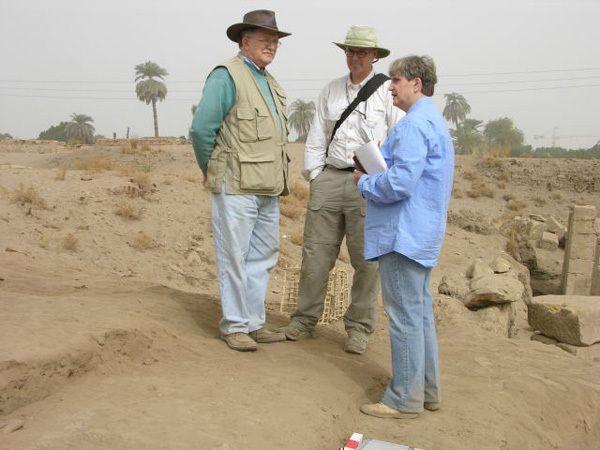
We are so happy that William and Elsie Peck could join us again this year. After a look around the site first thing Saturday morning (their first day), they had a chance to catch up with Jay van Rensselaer, the Johns Hopkins University Expedition’s photographer.
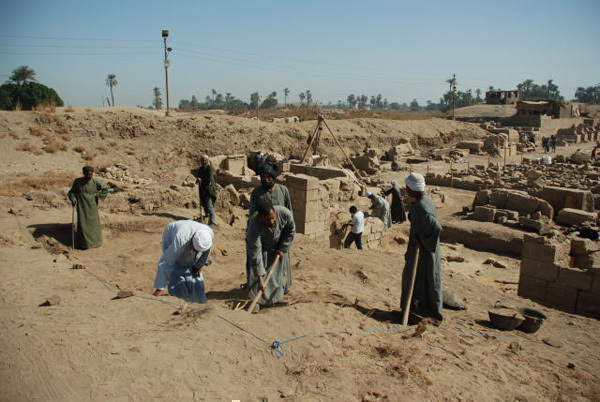
One of our goals this year is to find out what lies under the Ptolemaic or early Roman Period houses that fill the area west of the Taharqa Gate. On January 25 we laid out a new square that spans the width of the gate and Mamdouh and his team got right to work.
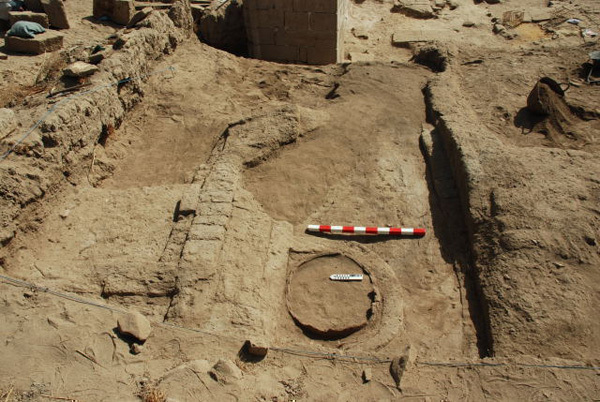
It was a productive week for Mamdouh in the north end of the new square. On the left and right, mud brick walls (Ptolemaic or Roman) discovered in an earlier season run east to the gate, whose north wing can be seen in the background. By the end of the week we had found a third east-west wall between them, partially cut by a later pit. Against its south side is a large pottery bin or jar set in a neat frame of packed mud or mud brick.
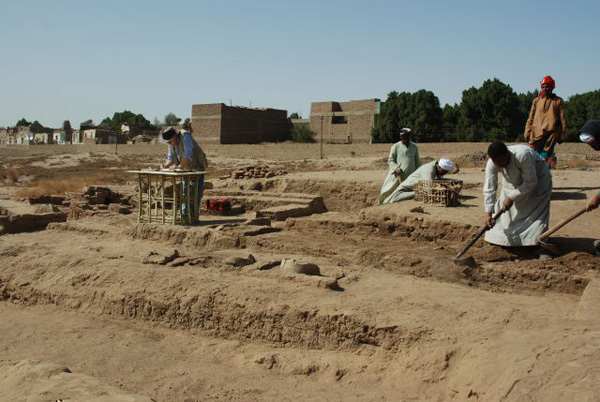
Sometimes activities overlap. Bill began mapping the baked brick building on Thursday while Mahmoud continued to work in the square next to it. We are getting a number of mud brick walls, but so far they don’t make much sense. Against the long north-south mud brick wall that defines the east side of the area we have discovered a group of pottery bins or ovens, visible in the foreground.
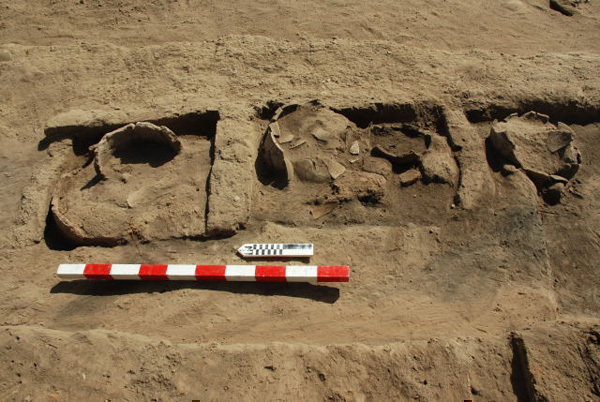
Here is a closer view of the bins/ovens, which are sitting in very ashy soil and are divided by narrow mud brick walls. The west side of this grouping has not yet been defined, but the arrangement reminds very much of similar bins/ovens discovered north of the Mut Temple’s 1st Pylon in 2006.
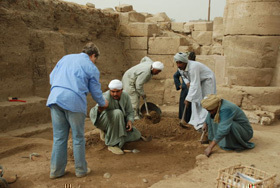
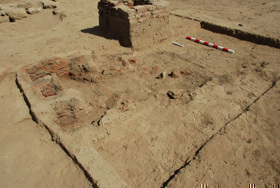
On the left, Abdel Aziz hands Elsie an interesting bit of pottery as he continues to clear the area north of the pylon. On Thursday, working in the area of the kiln/furnace discovered last year, he uncovered a fragment of a north-south mud brick wall (under the north arrow) east of the burnt brick area. He has also found a few more burnt bricks in the center of the area, so the kiln/furnace may be larger than we first thought.
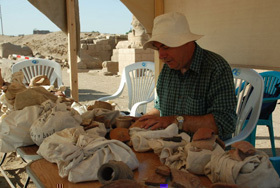
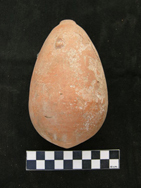
Dr. David Aston is a leading expert on pottery from the late New Kingdom through the Ptolemaic Period, so you can imagine how pleased we were when he agreed to come and have a look at some of our pottery on Wednesday afternoon. He was able to confirm that much of what we are finding is Ptolemaic or later (which is what we had thought), but did give us one surprise: the delicate, small jar on the right, with a very tiny neck, proved to be from the 1st Persian Period (Dynasty 27, 525-404 BC), somewhat earlier than expected. This will cause some rethinking of the area from which it came.
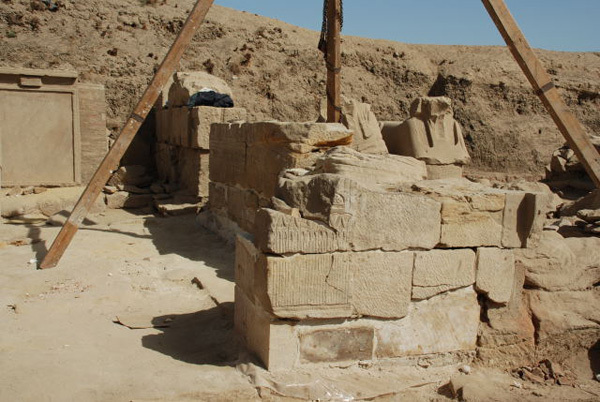
The restoration of the east side of Chapel D’s middle room is almost complete. The blocks are all back in place and all that remains now is to apply the final tinted coating to the repairs so that they match the color of the original stone.
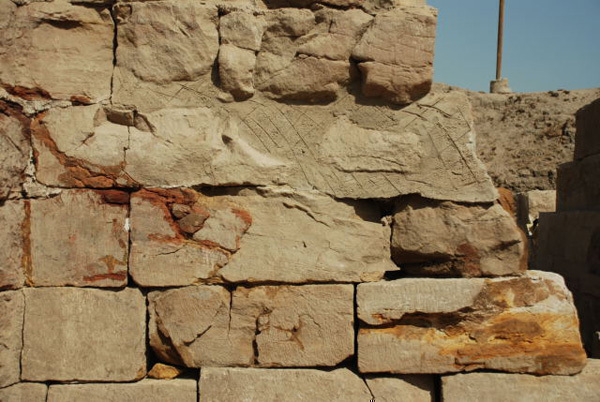
With Chapel D essentially done, work could begin in earnest on the Taharqa Gate. Early in the week the south face was cleaned and fragile areas treated with a consolidant; those are the brightly colored areas. We determined that old repair (upper right) done when the gate was first discovered in 1977 was still holding, so it was left in place.
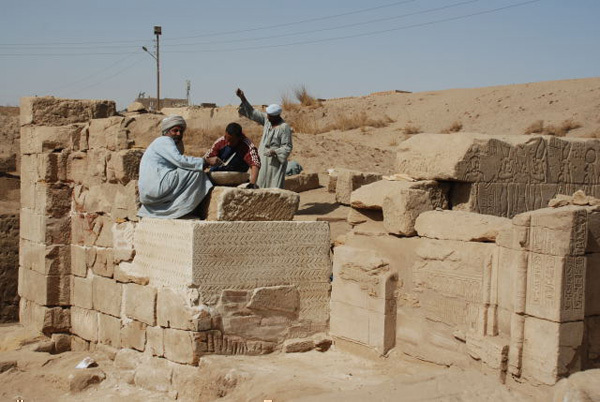
Khaled and his crew are making amazing progress with the gate. Above the lowest course, the original blocks of the east end had completely disintegrated and had to be entirely replaced. By January 29, this part of the work was finished, as you can see in this view that also includes the west facade of Chapel D. Next week we can begin repositioning the decorated portions of this end of the gate. The basin in front of Sayed Ahmed rests on top of a block of the gate’s core, which is also going back together quickly.
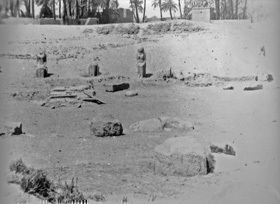
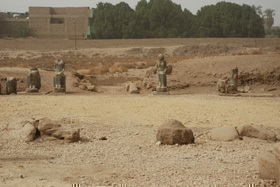
Franck Burgos, a stone mason working for the Johns Hopkins University team, gave us this print of a photograph of the west side of the Mut Temple’s 1st Court taken sometime after Margaret Benson and Janet Gourlay excavated the temple in the late 1890s. Thank you, Franck. On the right is the same view taken this week. The large Sakhmets in the old photo are clearly recognizable and are still roughly where they stood 100 years ago, although on new bases. The half-statue in the center was moved during our work in the court; it is on the extreme left in the modern photograph. Between the large statues is a gateway that was discovered by the Brooklyn expedition and fully cleared by the Hopkins expedition. The paving you can see in the older photograph once ran across the court from the gate to the temple’s main axis. In the 100 or so years between photographs it has been lost.
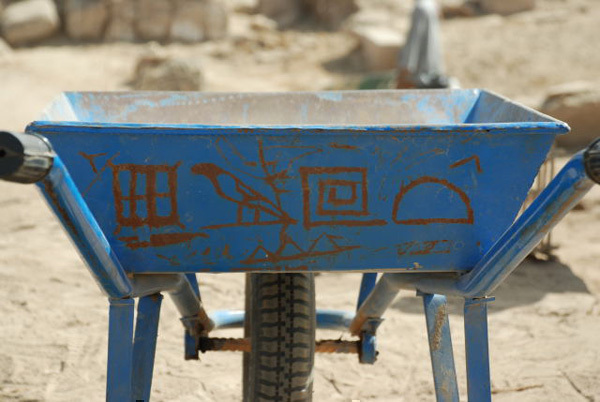
The precinct has obviously inspired one of our workmen; this is no ordinary wheelbarrow!
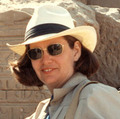
Mary McKercher holds a BA in Ancient Near Eastern Studies (specializing in Egypt) from the University of Toronto and is also a trained archaeologist. In 1979 she joined the Brooklyn Museum’s expedition to the Precinct of the Goddess Mut at South Karnak as photographer and archaeologist, roles she continues to fill. She has contributed to the Mut Expedition’s “Dig Diary” since it began in 2005, and put together the photographs for the 8 Mut Expedition photo sets on the museum’s Flickr site. With her husband, Richard Fazzini, she has also researched and written about the West’s ongoing fascination with ancient Egypt, commonly known as Egyptomania.
